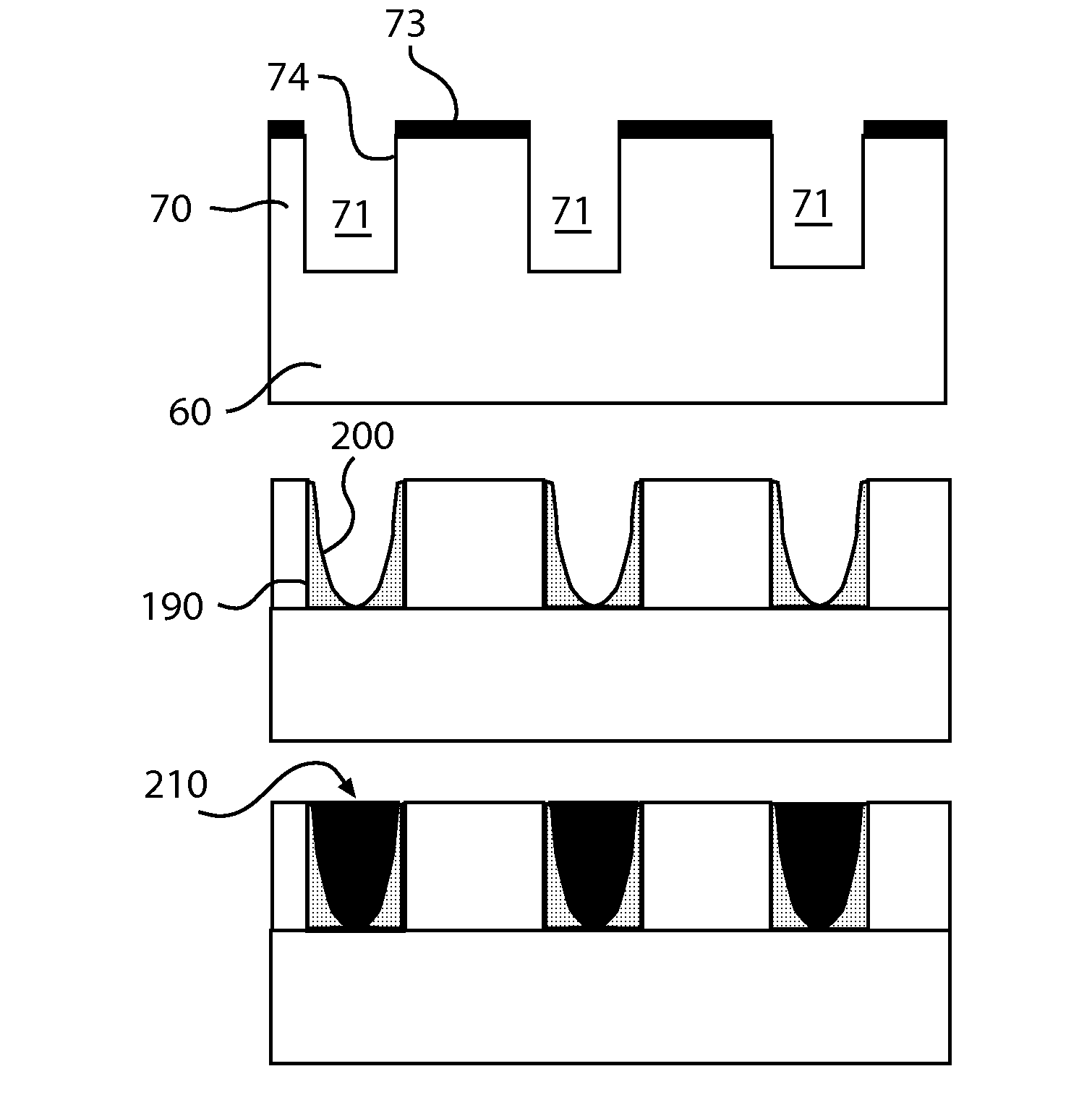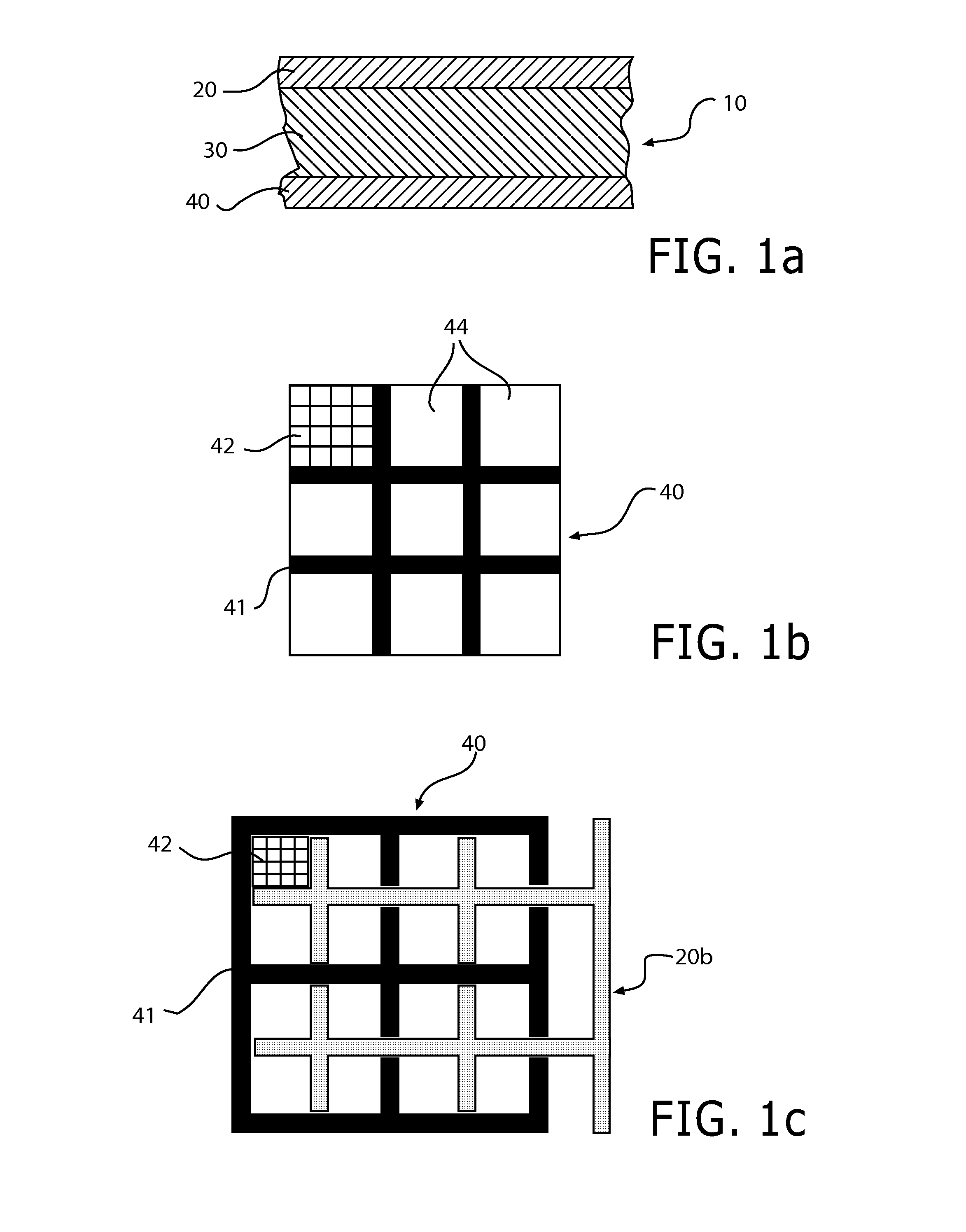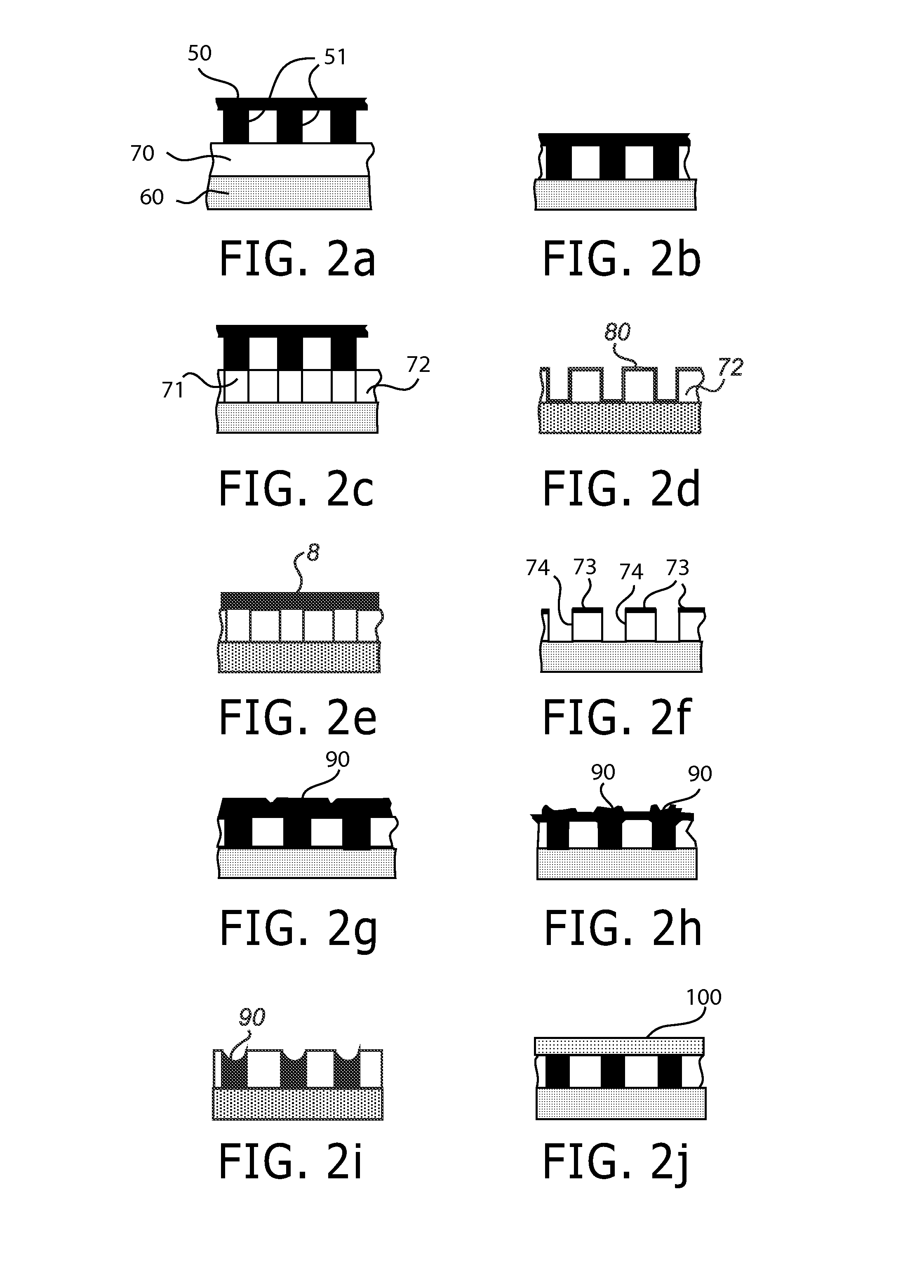Method for forming a patterned layer on a substrate
- Summary
- Abstract
- Description
- Claims
- Application Information
AI Technical Summary
Benefits of technology
Problems solved by technology
Method used
Image
Examples
Embodiment Construction
[0072]For the purpose of clarifying the method according to the present invention exemplary embodiments of the present invention will now be described.
[0073]A basic aspect of the method is the manufacture of a certain layer of an electronic device, such as an OLED or an organic photovoltaic device (i.e. an organic solar cell), see FIG. 1a). The layer is a conducting layer, for instance the cathode layer 20 or the anode layer 40 of the OLED 10, which in other respects also contain several organic layers 30 between the anode and cathode layers 20, 40. The conducting layer can be regarded as an extra metallization, as has been described above in the background of the invention. The extra metallization is added to realise a current distribution layer that has a low resistivity and high open area. In practice this results in high aspect ration metal lines on the OLED 10.
[0074]In the following the method according to the present invention is described in an non-limiting illustrative examp...
PUM
 Login to View More
Login to View More Abstract
Description
Claims
Application Information
 Login to View More
Login to View More - R&D
- Intellectual Property
- Life Sciences
- Materials
- Tech Scout
- Unparalleled Data Quality
- Higher Quality Content
- 60% Fewer Hallucinations
Browse by: Latest US Patents, China's latest patents, Technical Efficacy Thesaurus, Application Domain, Technology Topic, Popular Technical Reports.
© 2025 PatSnap. All rights reserved.Legal|Privacy policy|Modern Slavery Act Transparency Statement|Sitemap|About US| Contact US: help@patsnap.com



